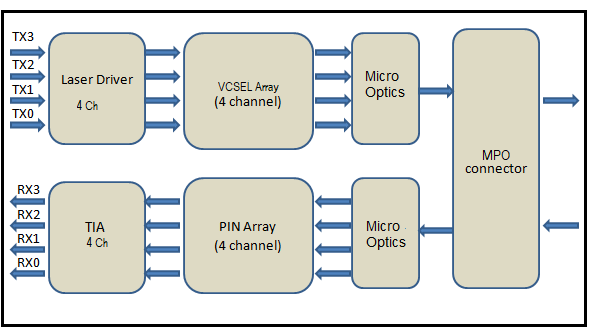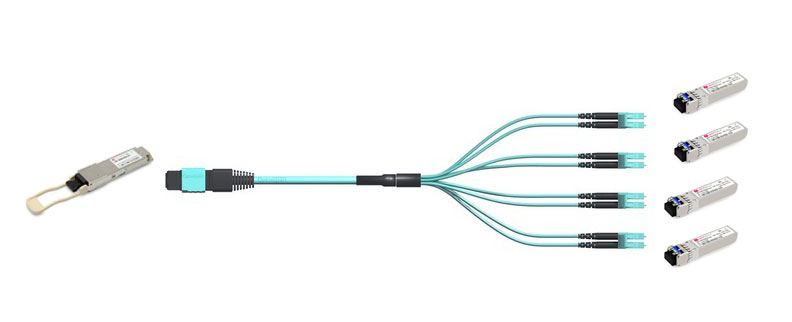Will 40G SR4 work for my breakout application?
We got this question from a customer recently which prompted this post. At first glance, it appears that all 40G SR4 transceivers should be able to support 4x 10G connections, but if you delve deeper you realize that it is not as simple as it sounds.
40G SR4 Functional Description
40G QSFP+ SR4 full-duplex optical module offers 4 independent transmit and receive channels, each capable of 10Gb/s operation for an aggregate data rate of 40Gb/s lending the module ideal for 4x10G breakouts.

40G QSFP+ SR4 transceiver converts parallel electrical input signals into parallel optical signals, by a driven Vertical Cavity Surface Emitting Laser (VCSEL) array. The receiver module converts parallel optical input signals via a photo detector array into parallel electrical output signals. All data signals are differential and support data rates up to 10Gb/s per channel. An optical fiber ribbon cable with an MTP/MPO connector can be plugged into the QSFP+ module receptacle.
40G Breakout Application
Now, there may be various applications where you want to split a single 40G interface to four 10G interfaces.
In this case, transmitter and receiver designs have to be optimized to enable easy interoperability and prevent receiver overload. According to IEEEE802.3ba, 40G SR transmitter power ranges from -7.6dBm min to 2.4dBm max while the 10G SR receiver max input in IEEE802.3ae is -1.0dBm. If transmit power is not modified, receiver overload and alarm triggering may occur.

A few 40G SR transceivers in the market, including Vitex QSFP+ 40G SR4 VQ-40SR4CP-IB are designed with breakout applications in mind. The maximum Tx output power is optimized to equal the maximum Rx input power of -1.0dBm. It allows optical interoperability between the 40GSR and the 10GSR transceivers of different form factors such as SFP+, XFP, and X2.
Which 40G Transceivers Work for 4x 10G Breakouts?
40G eSR4 QSFP+ modules also support 4x10G breakouts as they follow a similar architecture as 40G SR4 modules.
Because 40G LR4 transceivers incorporate CWDM technology and has a duplex LC interface, it is not as straightforward to breakout as SR4 modules. In this case, you would need a Multiplexer/Demultiplexer to split the signals into 4x10G signals over 4 fibers. One point to bear in mind here is that adding Multiplexer/Demultiplexer results in insertion loss.
Conclusion
As you saw, an important factor to consider when choosing transceivers is your application. Other factors are data rates (4×10.3Gbps and/or 4×10.75Gbps), disengagement mechanism (latch or pull-tab) and operating temperature (0°C to 70°C, or -40°C to 85°C)
If you would like more information on choosing the right transceiver, please contact Vitex Sales.
Related Products

